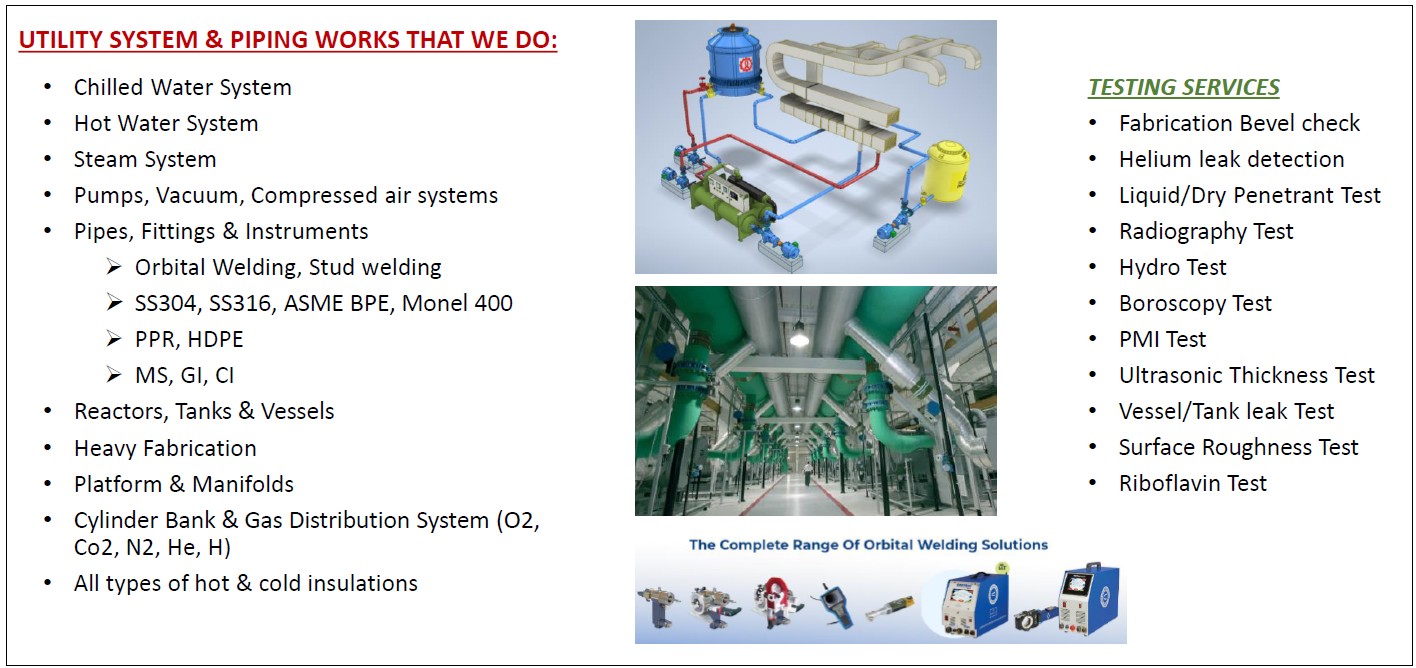Utility, Piping, GDS
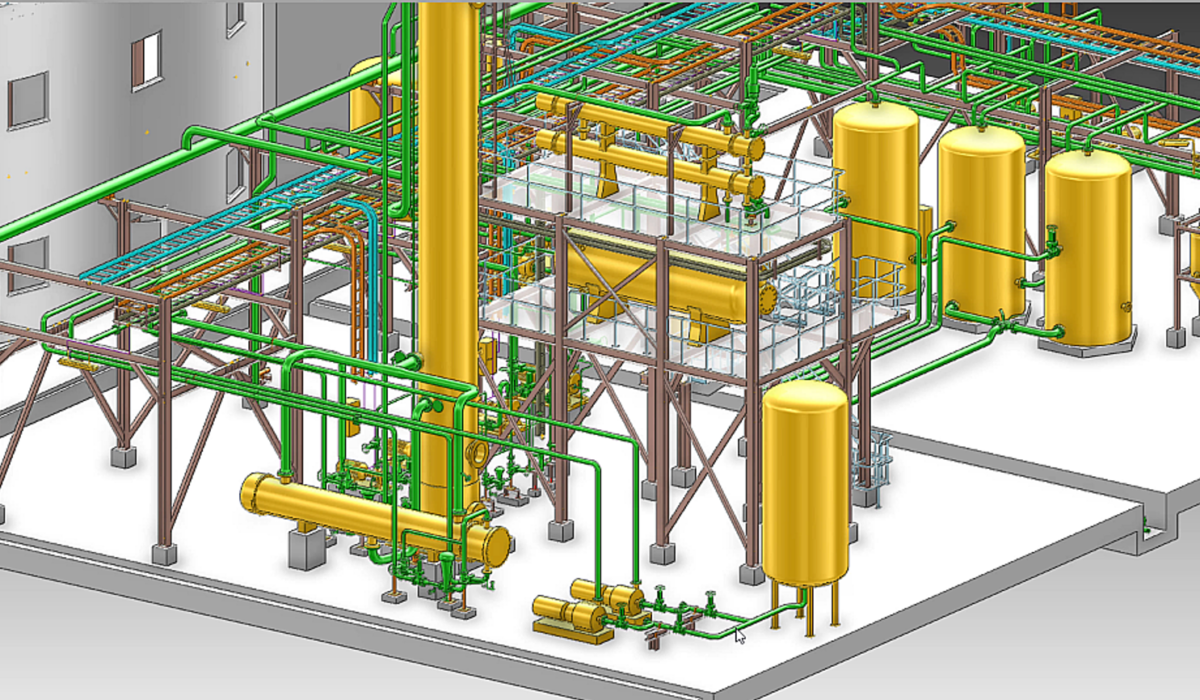

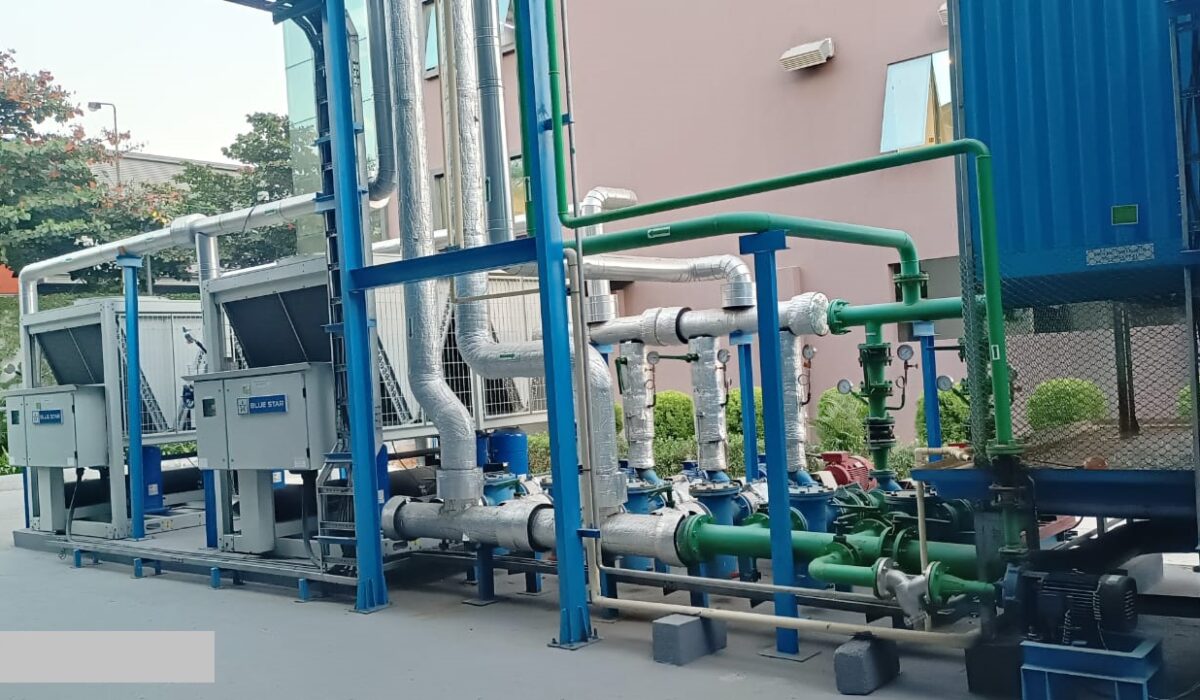
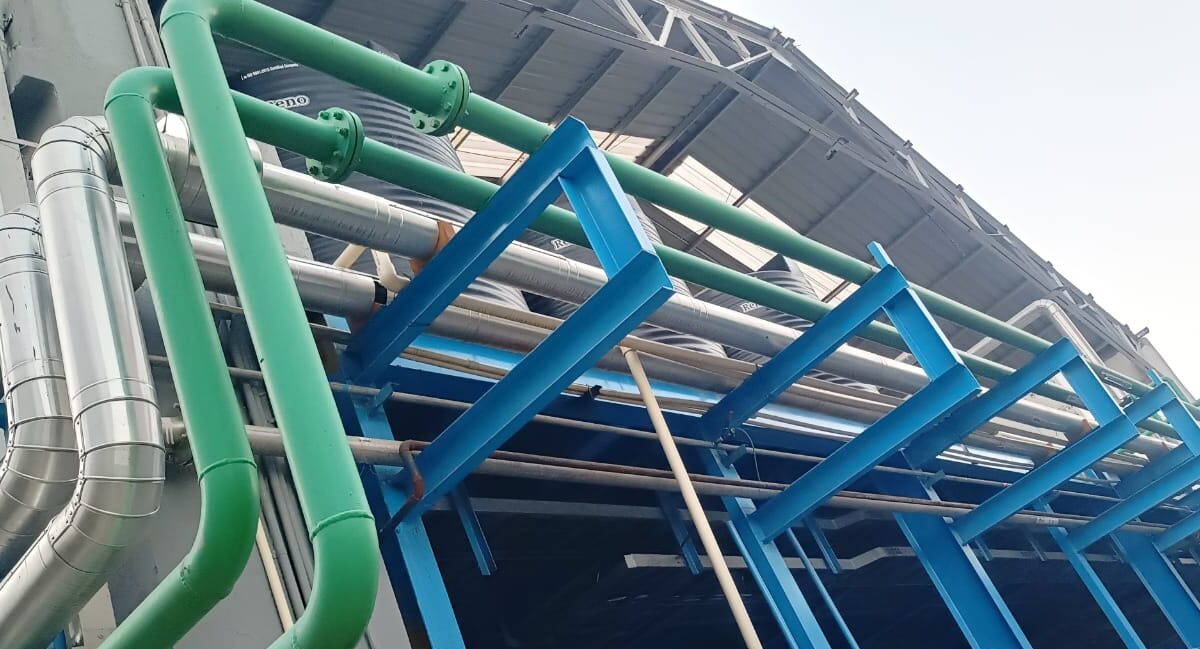
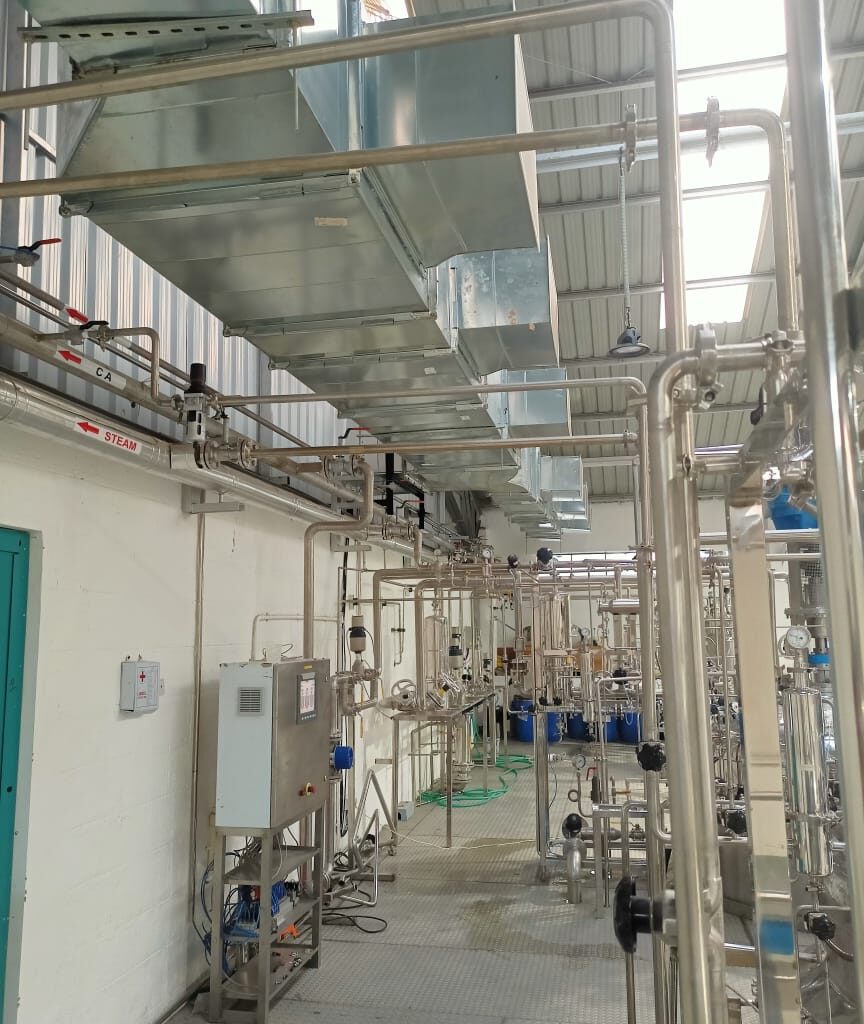
WHAT IS A UTILITY SYSTEM?
A utility system refers to a network of infrastructure and facilities that provide essential services to a community or building. These systems are vital for supporting daily activities and ensuring the functionality, comfort, and safety of individuals. Utility systems typically include:
- A chilled water system is a type of Utility system used to cool buildings and industrial facilities efficiently. In a chilled water system, chilled water is circulated through a network of pipes to absorb heat from the building’s air and other equipment, thereby cooling the indoor environment.
- A cooling water system is a type of industrial process designed to remove heat from equipment, machinery, or processes using water as the cooling medium. Unlike a chilled water system, which primarily focuses on cooling indoor spaces in buildings, a cooling water system is typically used in industrial settings to dissipate heat generated by various processes and equipment.
- A hot water system, also known as a hot water heating system, is a type of system used to provide heating to residential, commercial, and industrial buildings by circulating hot water through a network of pipes and radiators or underfloor heating systems.
- A steam system, also known as a steam heating system, is a type of system that utilizes steam as a medium for heating residential, commercial, and industrial buildings and industrial processes. Steam systems are widely used in manufacturing and process industries where the requirement for large scale heating exists to fulfill the process heating requirements above 90deg C.
- A compressed air system is a type of industrial infrastructure used to generate, store, and distribute compressed air for various applications in manufacturing, construction, transportation, and other industries. Compressed air is a versatile and widely used power source that can be utilized for pneumatic tools, air-powered machinery, control systems, and numerous other purposes.
- A gas distribution system is a network of pipelines, valves, meters, and other equipment designed to deliver natural gas or other gases from the source of supply to end-users, such as residential, commercial, industrial, and institutional consumers. These systems are crucial for providing a reliable and efficient supply of gas for heating, cooking, hot water, power generation, industrial processes, and other applications.
Utility systems are essential for supporting Industrial process requirements and infrastructure development. Efficient and reliable utility systems are critical for economic growth, social development, and environmental sustainability.
WHY IS SELECTION OF RIGHT UTILITY SYSTEM IS IMPORTANT
The selection of the right utility system for an industry is crucial for several reasons:
Process Efficiency: The utility system directly impacts process efficiency by providing essential resources such as electricity, steam, compressed air, water, and natural gas required for manufacturing, processing, and facility operations. Selecting the right utility system ensures that these resources are supplied reliably and efficiently, minimizing downtime and maximizing productivity.
Product Quality: Utility systems play a critical role in maintaining consistent process conditions necessary for producing high-quality products. Properly designed and operated utility systems help control factors such as temperature, humidity, pressure, and water quality, which can affect product quality and consistency.
Energy Consumption and Costs: Utility systems account for a significant portion of energy consumption and operating costs in industrial facilities. Selecting energy-efficient utility systems, optimizing resource usage, and implementing energy-saving technologies help reduce energy consumption, lower operating costs, and improve the overall financial performance of the facility.
Environmental Impact: Utility systems can have significant environmental impacts due to energy consumption, emissions, and resource usage. Choosing environmentally sustainable utility systems, implementing energy-efficient technologies, and minimizing waste and pollution help reduce the facility’s environmental footprint and contribute to sustainability goals.
Compliance and Regulations: Utility systems must comply with various regulatory requirements, standards, and codes related to safety, environmental protection, and resource management. Selecting the right utility system ensures compliance with applicable regulations and avoids potential fines, penalties, or legal liabilities associated with non-compliance.
Reliability and Resilience: Reliable utility systems are essential for maintaining continuous operations and minimizing production disruptions. Selecting robust and well-designed utility systems with redundant components, backup systems, and contingency plans helps ensure reliability and resilience in the face of equipment failures, outages, or emergencies.
Scalability and Flexibility: The selected utility system should be scalable and adaptable to accommodate changes in production requirements, technological advancements, and business growth. Flexibility in design, capacity, and configuration allows the utility system to evolve with the changing needs of the industry and the facility.
Safety and Risk Management: Utility systems pose various safety risks, including hazards associated with electricity, high-pressure systems, chemical handling, and environmental contamination. Selecting safe and reliable utility systems, implementing appropriate safety measures, and providing training for personnel help mitigate risks and ensure a safe working environment.
In summary, the selection of the right utility system for an industry is important because it directly impacts process efficiency, product quality, operating costs, environmental sustainability, regulatory compliance, reliability, safety, and the ability to adapt to changing business needs. A well-designed and properly operated utility system contributes to the overall success and competitiveness of the industry by optimizing resource utilization, minimizing risks, and maximizing productivity and profitability.
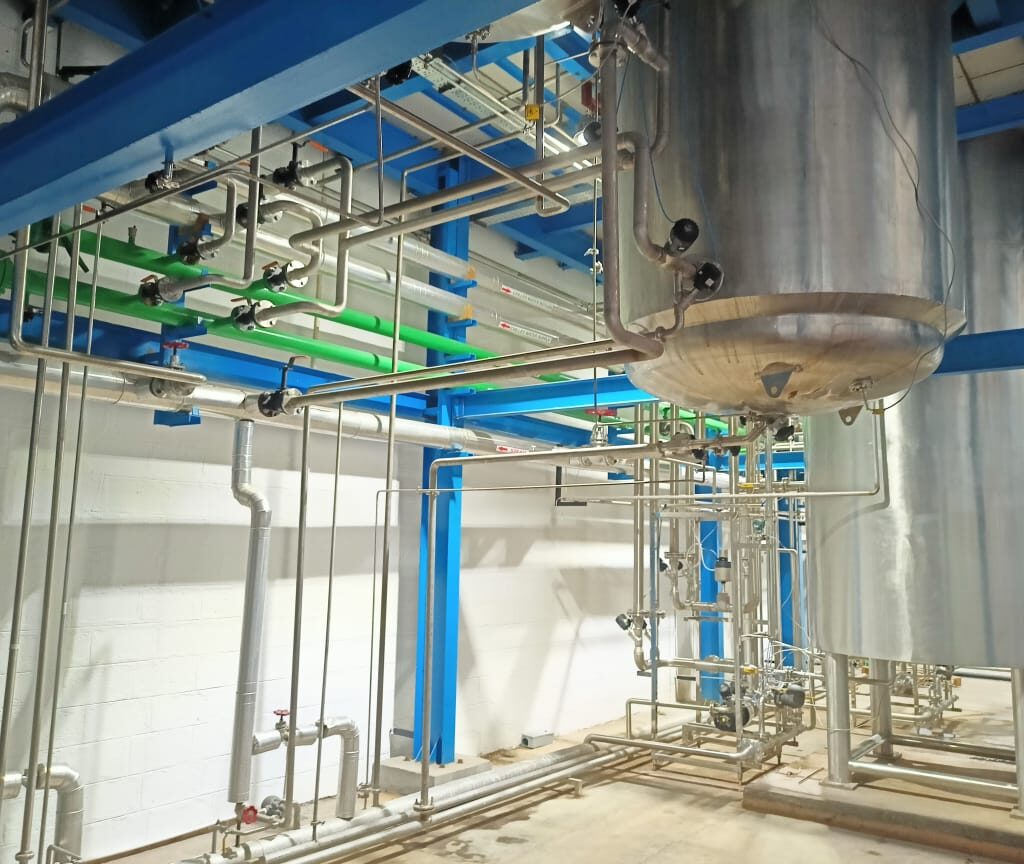
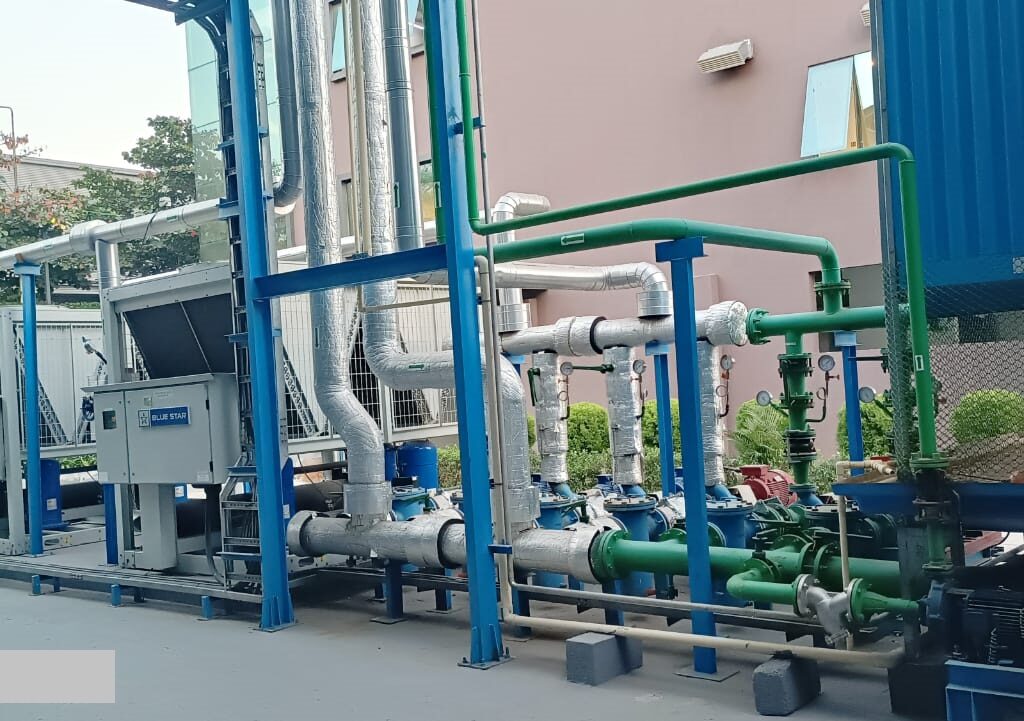
HOW TO GET THE RIGHT UTILITY SYSTEM FOR MY PROJECT?
Getting the right utility system for your project involves several steps to ensure that it meets the specific requirements and objectives of your project. Here’s a guide on how to get started:
Define Project Requirements: Begin by clearly defining the requirements and objectives of your project. Consider factors such as the type of industry, production processes, facility size, capacity requirements, energy sources, environmental considerations, regulatory requirements, budget constraints, and timeline for implementation.
Conduct a Needs Assessment: Assess the utility needs of your project by evaluating the types and quantities of utilities required, such as electricity, steam, compressed air, water, natural gas, and others. Identify the critical utilities essential for supporting core processes and operations.
Engage with Utility Experts: Consult with utility experts, engineers, consultants, and suppliers who have experience designing, implementing, and operating utility systems for projects similar to yours. They can provide valuable insights, recommendations, and technical expertise based on their knowledge and experience.
Perform Feasibility Studies: Conduct feasibility studies to evaluate different utility options and determine the most suitable solutions for your project. Consider factors such as energy efficiency, cost-effectiveness, environmental impact, regulatory compliance, reliability, scalability, and technological advancements.
Evaluate Technology Options: Explore different technology options and solutions available for utility systems, such as conventional systems, renewable energy sources, energy-efficient technologies, smart grid systems, and decentralized energy systems. Evaluate the pros and cons of each option based on your project requirements and objectives.
Develop Conceptual Designs: Develop conceptual designs and specifications for the utility system based on the identified requirements and technology options. Consider factors such as system layout, equipment selection, capacity sizing, distribution networks, control systems, and integration with existing infrastructure.
Cost-Benefit Analysis: Perform a cost-benefit analysis to compare the estimated costs and benefits of different utility system options. Consider factors such as upfront capital costs, operating costs, energy savings, environmental benefits, return on investment (ROI), and long-term sustainability.
Risk Assessment: Identify and assess potential risks and challenges associated with each utility system option, such as technical risks, operational risks, regulatory risks, financial risks, and environmental risks. Develop risk mitigation strategies to address and minimize these risks.
Procurement and Implementation: Once the optimal utility system option has been selected, proceed with procuring the necessary equipment, materials, and services. Work with reputable suppliers, contractors, and vendors to ensure quality, reliability, and timely delivery. Implement the utility system according to the approved designs and specifications, and monitor the progress closely to ensure successful implementation.
Commissioning and Testing: After installation, commission the utility system to verify proper operation and performance. Conduct thorough testing, including functional tests, performance tests, safety tests, and regulatory compliance tests, to ensure that the system meets the specified requirements and standards.
Training and Documentation: Provide training for personnel responsible for operating and maintaining the utility system. Develop comprehensive documentation, operating manuals, maintenance procedures, and emergency response plans to support ongoing operation, maintenance, and troubleshooting.
Monitor and Optimize Performance: Continuously monitor and evaluate the performance of the utility system to identify opportunities for optimization, efficiency improvements, and cost savings. Implement preventive maintenance programs, energy management strategies, and performance monitoring systems to maximize the reliability, efficiency, and sustainability of the utility system throughout its lifecycle.
By following these steps and working closely with utility experts and stakeholders, you can ensure that you get the right utility system for your project, meeting your specific requirements and objectives while maximizing efficiency, reliability, and sustainability.
